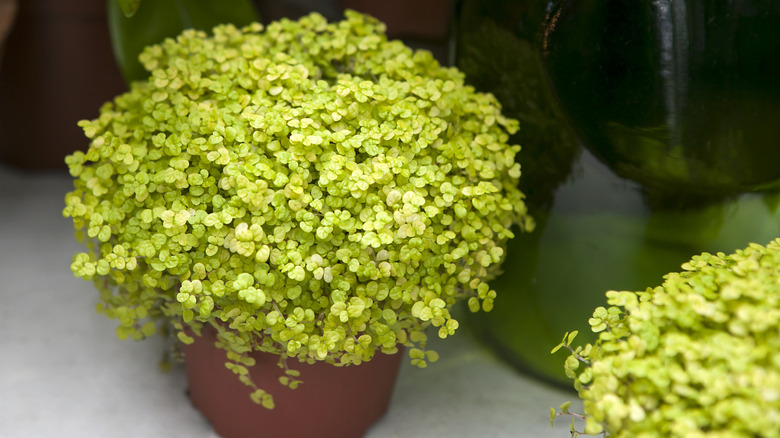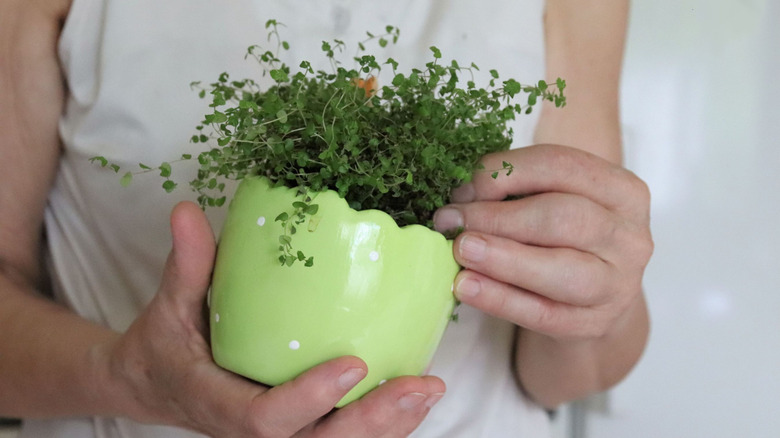Tips For Growing Baby's Tears Plants Indoors To Keep Them Happy And Healthy
There are many houseplants that you can add to your home to create a more natural atmosphere and introduce some greenery indoors. Among the many beautiful plants available, one of the best to consider is baby's tears (Soleirolia soleirolii). With a lovely appearance featuring tiny green leaves, fern-like stems, and thin, feather-like foliage, this plant is reminiscent of moss and can look stunning in many different areas of the home.
This plant is well-suited for the indoors but can also be grown outdoors as a soft ground cover in USDA Hardiness Zones 9a through 11b. If you've decided to grow baby's tears indoors, you'll need to know a few things to ensure it thrives. Primarily, it prefers to get bright, indirect light. A bit of shade is fine, so placing it near a window can work well if the light is filtered a bit first. Be careful that the sunlight isn't too direct, or the plant could get burned. Also, paying attention to soil, water, humidity, and temperature conditions is essential for keeping your indoor baby's tears plant as healthy as possible.
Important things to remember when growing baby's tears plants indoors
In addition to bright, indirect light, baby's tears plants also prefer moist and well-drained soil. The plant needs water, but avoid overwhelming it with too much and letting the soil get soggy. Place the plant in a pot with drainage holes, and make sure that you keep the soil moisture balanced.
The baby's tears plant is a humidity and moisture-loving plant perfect for the bathroom, but you may also want to keep it in the kitchen. The plant is non-toxic to both humans and pets, so any location is safe — and it's one among other pretty houseplants that are safe for your child's bedroom. However, if you need to increase the plant's humidity, consider adding a humidifier to its space. Alternatively, mist it on a regular basis or set it in a pebble tray filled with water.
During the growing season, it's important to give the houseplant a small amount of balanced liquid fertilizer. Aim for every four to six weeks during the spring and summer months. The plant is not too picky about temperature as long as it stays consistent. A typical indoor environment works well since it thrives between 60 and 75 degrees Fahrenheit.

